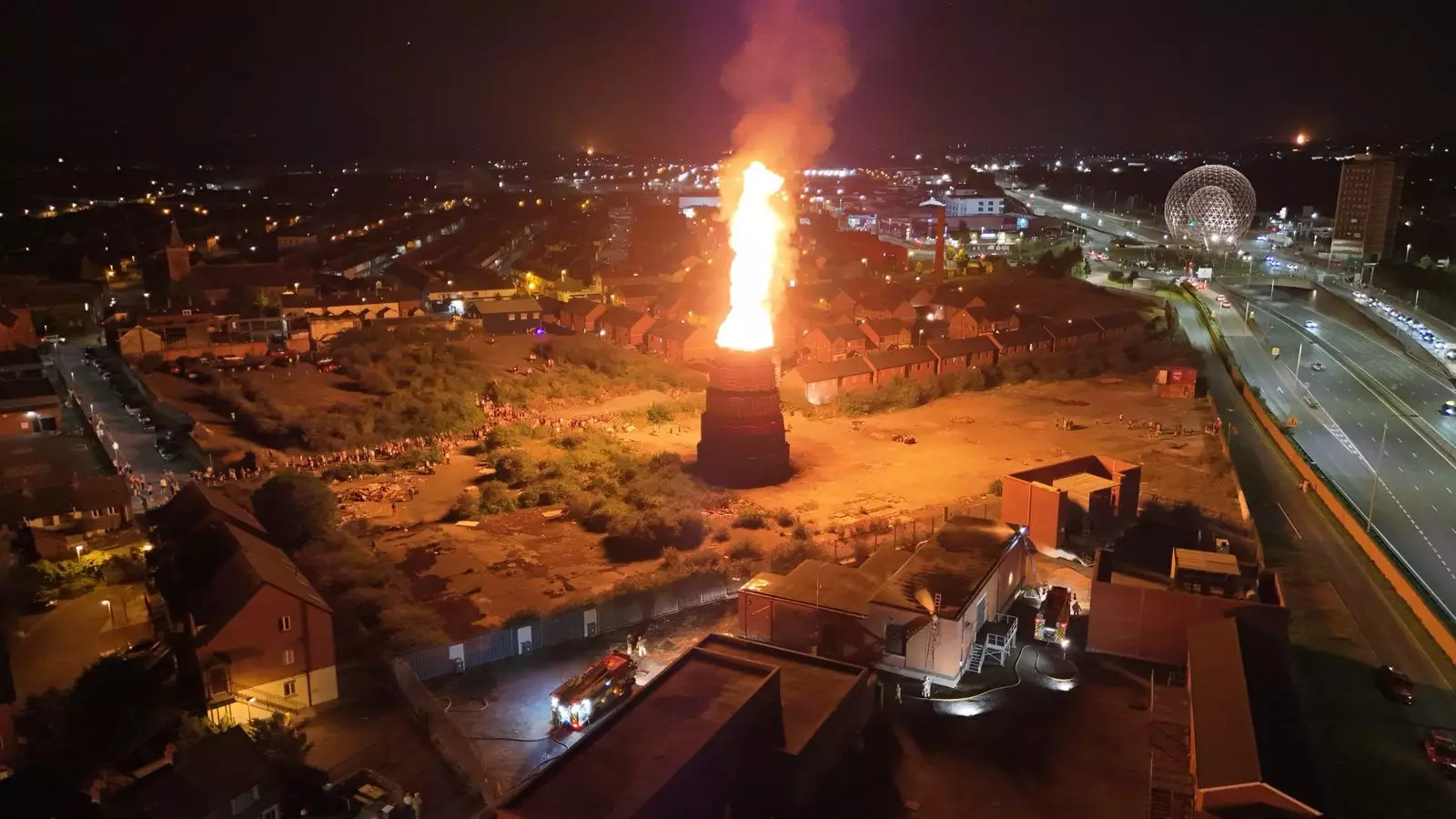Every year, the fireworks and flames of Northern Ireland’s so-called “Eleventh Night” illuminate debates far beyond their fiery spectacle. These bonfires, rooted in centuries-old customs celebrating Protestant dominance, continue to spark not just flames but fierce controversy. While many see the tradition as a vital thread in their cultural fabric, a closer look reveals a disturbing pattern of recklessness, environmental harm, and exacerbation of societal divisions. The recent chaos underscores a deep-rooted resistance to progress, exposing how cherished rituals can morph into destructive acts that threaten communities’ safety and values.
The past few nights have been particularly chaotic, with firefighters overwhelmed by emergencies linked to over 300 bonfire sites. The numbers reflect a troubling trend — a spike in operations that strain vital emergency services. Most are legal and peaceful, yet the occurrences, especially at hazardous sites like the asbestos-contaminated area in Belfast, highlight a reckless disregard for public safety. The decision to light fires at dangerous locations despite repeated warnings from political and environmental authorities demonstrates a stubborn adherence to tradition at the cost of community well-being.
Environmental and Health Risks: Ignoring the Bigger Picture
One of the most startling aspects of this year’s bonfire chaos lies in the environmental hazards posed by these events. An asbestos-laden site being ignited is not just a symbolic act; it’s a violation of public health protocols. The danger posed by releasing asbestos fibers into the air cannot be overstated — it threatens those nearby, especially vulnerable populations in hospitals reliant on power supplied by the very site at risk. The deliberate decision to light the fire despite safety warnings epitomizes a dismissive attitude toward environmental and human health.
This confrontation with environmental safety reveals a broader issue: a failure among community leaders and participants to prioritize sustainable and responsible celebrations. These traditions, instead of fostering unity, are increasingly becoming hazards that threaten the fabric of society itself. As the government launches investigations into environmental crimes, it’s evident that old customs are being clung to at the expense of progress and safety. The community’s resilience should be demonstrated through adherence to safety standards and innovation, not through destructive rebellion against regulations.
Symbolism, Provocation, and the Danger of Divisiveness
Bonfire night has long been intertwined with displays of provocative symbols—effigies, banners, and posters aimed at stoking cultural and political tensions. This year’s events, such as the effigy of migrants in a boat burned on a bonfire, epitomize the use of violence and hostility to communicate divisive messages. These acts are more than mere symbolic statements; they reinforce harmful stereotypes and deepen societal rifts.
The inclusion of controversial elements like effigies linked to political groups and provocative messages about politicians further complicates the narrative. These acts transcend tradition, crossing into territory that fuels hatred, intolerance, and division. The celebration, which could be a moment of cultural pride, risks becoming a flashpoint for violence if it continues unchecked. The burning of such figures marginalizes communities, fosters alienation, and threatens the fragile social cohesion within Northern Ireland.
Furthermore, the burning of figures representing marginalized groups, such as migrants, signals a disturbing endorsement of hostility that undermines the region’s pursuit of a more inclusive society. The apparent political and social provocation associated with these bonfires demonstrates a refusal to acknowledge that these events have evolved from innocent tradition into symbols of intolerance—a trend that is as damaging as it is undeniable.
Legal and Political Entrapment
Despite growing awareness and legal challenges—like the declaration of certain sites as sensitive parades—authorities struggle to curb destructive practices. The police presence, with over 4,000 officers on duty, underscores the high stakes and potential for violence. Yet, these measures often fall short of deterring reckless acts, revealing a systemic problem rooted in cultural loyalty and resistance to external regulation.
The destruction inherent in these celebrations reflects a broader political impasse: a reluctance among sections of the community to adapt or compromise, even when safety and harmony are at stake. Attempts at legal intervention and community dialogue seem insufficient against the tide of tradition that refuses to evolve. The question remains whether these rituals serve their purpose in fostering communal identity or if they perpetuate a cycle of divisiveness and danger. As long as symbols of division are permissible, conflicts are bound to flare, threatening the fragile peace and social fabric of the region.
Without urgent cultural introspection and a willingness to adapt, Northern Ireland’s bonfire traditions risk becoming more than just controversial—they could cement societal divides and prolong conflicts that should be relics of a less enlightened past. It is essential that community leaders, policymakers, and citizens critically evaluate whether maintaining these traditions serves progress or entrenches harmful divisions.

